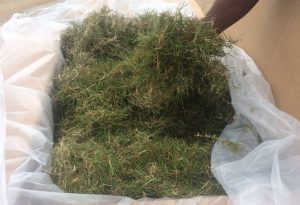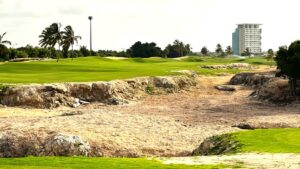The island of Barbados in the Caribbean is perhaps better known for spectacular beaches than it is for golf courses, but there is a significant amount of golf on the island. The Apes Hill course, located on an old sugar plantation in the mountainous north of the island, was originally developed by American firm Landmark Land – and designed by Jeff Potts and Chris Cole, the company’s in-house design team.
Apes Hill originally opened in 2009 but closed in 2018, and, two years later, was sold to Canadian investor Glenn Chamandy, the founder of Montreal-based clothing company Gildan Activewear, who hired veteran architect Ron Kirby to rebuild it, with a brief to improve the course’s playability and sustainability.
The course reopened last year; Kirby recently passed away at the age of 90. In his last interview, given to Golf Course Architecture earlier this year, Kirby said of the original architects, “They didn’t do a bad job – the routing is pretty good – but it was too difficult – the opening hole was an uphill par five straight into the prevailing wind, and it went on in the same kind of mode. My goal was to make a course that, after you played it, you wanted to play it again. I said to the owner, ‘Have you played Augusta?’. He said yes. I said, ‘Well, there’s thirty bunkers on that course. Let’s try for that.’ I think it is coming out really well – the real estate is selling now, and the new ownership is on the plus side.”
Zorro is, in my opinion, the best zoysia out there, and also great value.
Ed Paskins, Golf Course Superintendent at Apes Hill
The new look Apes Hill has been grassed with Zorro Zoysia, supplied by Atlas Turf, everywhere except the greens, which are TifEagle bermuda, also supplied by Atlas Turf.
Course superintendent Ed Paskins – a New Zealander who has lived in Barbados for 23 years – says: “When we started the project, I thought we would just rebuild greens and tees, but it just kept getting bigger and bigger until it became a total reconstruction. When the course was originally built, it was grassed with an older paspalum variety. Paspalum is a great grass, especially if you have difficulties with your water supply, but we have a great water supply thanks to an enormous reservoir – it holds 57 million gallons of water – built by the original developer. The reservoir collects rainwater in the wet season – the course is 100 percent irrigated with collected rainwater – and also provides habitat for migratory birds. When we started the project, the owner said, ‘We want to be environmentally friendly and get the right grass,’ and in my mind, that meant zoysia. Zoysia can be a difficult turf because it grows when it wants to, not necessarily when you want it to, but the Zorro is, in my opinion, the best zoysia out there, and also great value – I saved a large sum of money by using Zorro over choosing one of the other popular modern zoysia strains. We have an extended dry season here, and zoysia copes well with it. You turn the water off, and the grass goes dormant, but when it gets some more water, it comes back very quickly. I’m really happy with our grass choices and with the service provided by Atlas Turf – they are very easy to deal with.”



